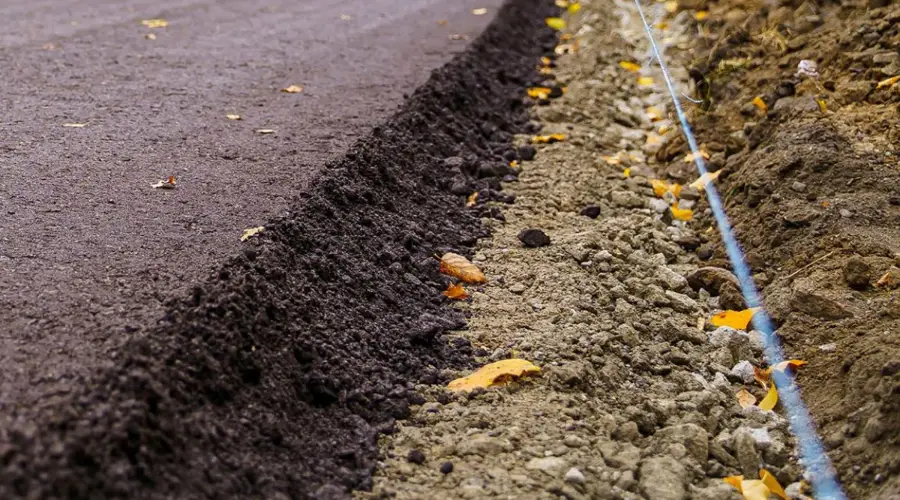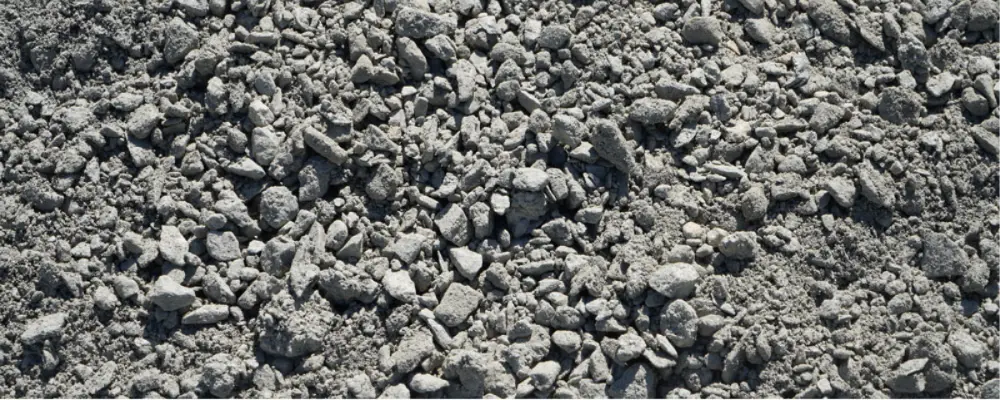Due to the rapid advancement in technology, the construction industry is experiencing various new techniques. Builders can witness tremendous changes in project execution when compared to previous decades. However, it is always good to adapt to the advancements to make the project reliable and efficient.
One of the products is DGA, which stands for Dense Graded Aggregate. It is a type of aggregate used in a wide range of applications.
In this article, you will uncover significant information about DGA, including its characteristics, benefits, and applications. Let’s delve into the topic:
What is Dense Graded Aggregate (DGA)?
Dense Graded Aggregate (DGA) is a type of aggregates material often used in various types of constructions, such as road and infrastructure projects. It consists of larger particles measuring around 1 inch and has been used as a base for proper compaction in roads, parking lots, and driveways. It is a blend of crushed stone and stone dust, creating a stable, durable, and dense surface.
Key Characteristics of Dense Graded Aggregate
- Dense graded aggregate is available in various particle sizes. The size range for DGA typically falls between 1 inch (25.4 mm) to 0 inches (0 mm), encompassing a variety of sizes from larger stones to finer materials such as stone dust. When used in construction, it ensures efficient packing and minimal voids between the particles.
- The dense packing of particles contributes to the excellent strength and load-bearing capacity.
- DGA offers superior compatibility under mechanical pressure, leading to a stable and reliable surface.
- Due to its low permeability, DGA reduces the risk of frost damage and erosion.
- A well-interlocking of particles provides constant strength and resistance against deformation, weathering, abrasion, and other environmental impacts.
Benefits of Using Dense Graded Aggregate in Construction
Dense graded aggregate provides several advantages to construction projects, such as:
Improved Load-Bearing Capacity: DGA builds a strong and dense packing of particles, allowing the structure to possess an excellent load-bearing capacity and be an ideal option for heavy-duty applications. Its enhanced strength and stability reduce the need for frequent repair and maintenance.
Durability and Longevity: DGA is a type of aggregate that enables a durable bond between the particles and contributes to the durability and longevity of the pavement. It also provides excellent resistance against deformation and damage caused by environmental factors and traffic loads.
Economical: While using DGA as a base material can be cost-effective, it is suitable for projects with budget constraints. It provides a strong foundation and often reduces repair and maintenance over the life of the pavement.
Applications of Dense Graded Aggregate
DGA is a versatile material used in various applications in the construction industry. These include:
Road Construction: It is a crucial component that acts as both a base and subbase material in the construction of roads and highways. It is key to improving the structural integrity of the constructions and resistance to traffic loads.

Infrastructure Projects: DGA is used in large-scale infrastructures such as abutments, bridge decks, piers, and airport runways. In addition to the structural support and durability, it ensures safe and smooth operation.
Subgrade Stabilization: DGA is a precise choice for areas that are subjected to weak or unstable soil. It helps stabilise the subgrade before the construction of pavement begins. It also prevents settling and helps build a reliable pavement structure.
Base Layer for Pavements: DGA serves as a fundamental layer for pavements such as parking lots, driveways, and roads. It ensures a strong foundation by supporting the overlying asphalt and distributing the load evenly throughout the structure.
How to Properly Use Dense Graded Aggregate?
When using DGA in the best possible ways, you can enjoy optimal performance and durability of the structure. Here are some guidelines:
Quality Check: Conduct thorough research and choose a reliable supplier or company where DGA meets the determined quality standards. With laboratory tests, it is easy to verify that the aggregate has the desired strength, gradation, and durability.
Efficient Storage and Handling: It is highly recommended to store DGA in a well-drained area to prevent degradation and contamination. By using appropriate techniques and equipment, it is possible to maintain the desired gradation.
Base Preparation: Base preparation is a crucial step that requires a clean and dust-free surface. An optimal moisture content is essential for proper compaction; excess moisture can reduce strength and hinder compaction.
Placement: When DGA is used as a base layer, it must be in an appropriate thickness that is typically around 4 to 6 inches. To achieve the desired density, use suitable compaction equipment like rollers. Conducting a field density test allows you to monitor the compaction efforts periodically.
Specifications and Standards for Dense Graded Aggregate
The specifications and standards of DGA can significantly vary based on the intended applications and the country in which it is used. However, some of the common points are explained below:
- The aggregate should be durable, cubical in shape, hard, and clean.
- DGA should have low porosity.
- The recommended level of magnesium sulfate is less than or equal to 18%.
- Its water absorption capacity should be 2%.
- This aggregate should have sufficient strength to withstand heavy loads.
- It must be resistant to abrasion, deformation, weathering, and other environmental impacts.
- It should be free from silt, clay, and other deleterious materials, which can influence its performance.
Final Wordings
DGA is a crucial material in the construction sector, especially in projects like pavements and stabilisation of subgrades. Its excellent strength, stability, and load-bearing capacity make it an ideal choice for achieving a solid foundation. Understanding its complete usage can help you make an informed decision.
FAQs
The thickness ranges from 4 to 6 inches for base layers and 2 to 4 inches for sublayers. It can vary based on the requirements of specific applications and local standards.
Due to its dense packing and interlocked structure, DGA can actively resist erosive forces caused by water and wind. It also prevents the underlying soil from eroding. Additionally, the well-graded particle size can actively reduce the risk of subsequent erosion and water accumulation.
Yes, DGA can be reused. However, it is advisable to ensure the material is suitable for that specific requirement. It may be cleaning, blending, or screening; a quality DGA can provide desired gradation and quality.

